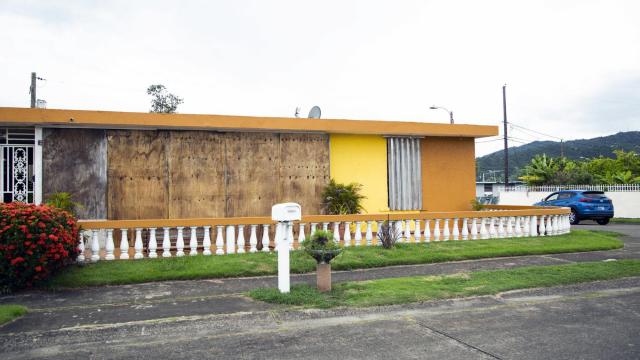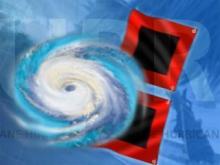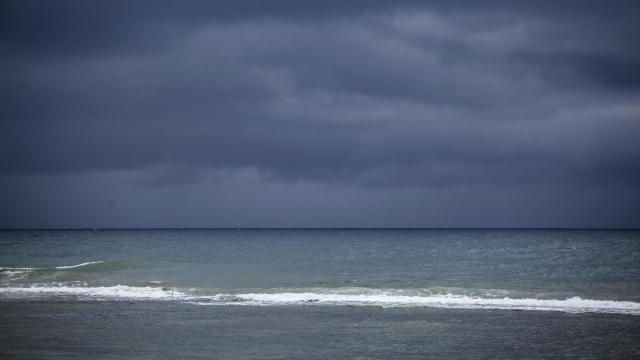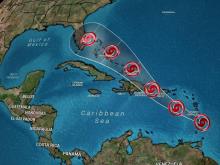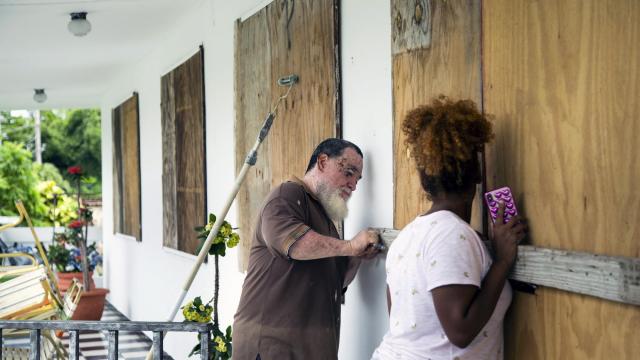- Photos, videos | Heavy rain falls across the Houston area flooding roads, causing damage
- Tornadoes leave a trail of destruction in Oklahoma, communities begin to assess damage
- 'This is our life' | Sulphur, Oklahoma family reacts to losing everything in Saturday's deadly tornadoes
- Severe weather threat dwindles Sunday night
- Tornado Watch for Coastal Plains Sunday evening
Hurricane Dorian Strengthens to Category 1 Storm
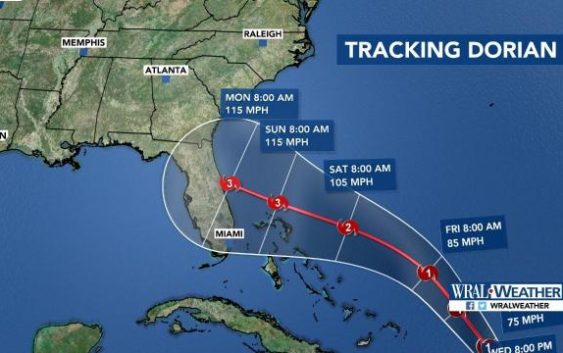
Hurricane Dorian was hitting the Virgin Islands on Wednesday, and it was expected to slam into the island municipalities of Vieques and Culebra in Puerto Rico before moving into warm Atlantic waters, where it may strengthen into a major storm threatening the Southeastern United States.
The compact storm has been maddeningly difficult to forecast, as tends to be the case with disorganized systems.
The storm, which reached hurricane strength shortly before 2 p.m. Eastern time, is no longer expected to cross through Puerto Rico’s big island. Puerto Ricans had feared that Dorian would be the first real test of Puerto Rico’s revamped electrical grid. Hurricanes Irma and Maria in 2017 left the entire island without power. In some places, it took a year to restore electricity.
The electrical grid remains fragile and prone to power losses, though, and some problems were reported Wednesday afternoon. Authorities say they have more supplies on hand to make repairs now than they did in 2017.
Unlike Maria, however, Dorian will bring more water than wind, according to Roberto García, director of the National Weather Service office in San Juan.
“The greater impact of this system is the rain,” García said at a news conference. “This is not a Maria, in terms of wind.”
The U.S. Virgin Islands and the east side of Puerto Rico are expected to be whipped by strong winds and between 4 to 6 inches of rain, with up to 10 inches predicted in some isolated spots.
The storm was near St. Thomas, one of the U.S. Virgin Islands, at 2 p.m. Eastern time Wednesday. Earlier in the day, the islands distributed sandbags and Gov. Albert Bryan Jr. issued a territory-wide curfew that took effect at noon and extends through 6 a.m. Thursday.
Storm-wary Puerto Ricans prepared early.
On Wednesday morning, Lourdes López, 44, filled gasoline containers with her husband, Juan Ortega, 46, at a filling station in the quiet streets of San Juan. “In case the power goes out, for the generator,” she said.
Two years ago, Hurricane Maria blew the zinc roof off their home. “But this time, we’re set,” López said.
Some 30,000 people still have tarps as roofs, according to Carlos A. Acevedo Caballero, director of Puerto Rico’s Bureau for Emergency and Disaster Management. Hurricane Maria led to the deaths of an estimated 2,975 people.
Mayor María E. Meléndez of Ponce, on the south side of the island, was at her city’s emergency operations center until almost midnight on Tuesday, worried about what residents might need in the event of a storm surge, flooding or a blackout.
Meléndez said many people were calm because Dorian had initially approached the island as a tropical storm. “Mayors are not. As we say, the electric grid is held together with tape.”
Dorian could also hit Florida as a Category 3 hurricane over the holiday weekend.
With all of Florida’s east coast inside the cone of Dorian’s potential path, officials in the state spent Wednesday watching the forecast nervously and encouraging residents to prepare for the storm, which could arrive as a Category 3 hurricane.
Gov. Ron DeSantis told Floridians to have seven days’ worth of supplies on hand. Leaders in Palm Beach County said they were consulting regularly with the National Weather Service. And in Volusia County, northeast of Orlando, the sheriff’s office said deputies were “preparing as if a storm is coming our way, so we’ll be ready if it does.”
Ken Graham, the director of the National Hurricane Center, said the recent forecast shows that there is “the potential for a major hurricane on the Southeast coast, throughout Florida.”
Dorian is currently expected to reach land in Florida around 8 a.m. Monday, but the storm’s movements have been difficult to predict with precision, and forecasters said the range of possible landing zones is wide, anywhere from the southern tip of Florida through the northern edge of the Georgia coast.
Storm-force winds could come ashore sooner — perhaps as early as Saturday night — and may extend north through the South Carolina coast.
“That’s when you need to have things wrapped up, because it’s too dangerous to be outside,” Graham said. “You need to be prepared by then. Get your plans together.”
Mayor Lenny Curry of Jacksonville, a city that sustained heavy damage from flooding two years ago during Hurricane Irma, said the city was “a day or two” away from making a decision about whether to call for evacuations. The mayor said he did not know whether the football game between Florida State and Boise State, scheduled for Saturday evening in Jacksonville, would go ahead.
Regarding the storm, he said: “We’ve done this before. We’ve been through this together. This is no time to panic.” President Donald Trump approved a federal emergency declaration for Puerto Rico.
As Dorian approached Puerto Rico, Trump continued his long-running verbal war with the island’s leaders on Wednesday in a series of Twitter messages. A day earlier, Trump approved a request for an emergency declaration, authorizing federal coordination of relief efforts and assistance.
“Puerto Rico is one of the most corrupt places on earth,” Trump said in one post. “Their political system is broken and their politicians are either Incompetent or Corrupt.”
He singled out Mayor Carmen Yulín Cruz of San Juan, with whom he sparred repeatedly after Hurricane Maria shredded parts of the island in 2017. Cruz responded with a Twitter post of her own.
Even after the emergency declaration, federal money for hurricane preparations remained an issue.
Democrats in Washington criticized the Department of Homeland Security on Tuesday for transferring more than $150 million from the Federal Emergency Management Agency’s disaster relief fund to pay for temporary immigration courts at the southwest border.
And the Trump administration said this month that it would delay about $9 billion in disaster prevention funds intended for Puerto Rico and the U.S. Virgin Islands, citing concerns over fiscal management.
In Puerto Rico, operators say the 911 phone system is not ready for a disaster.
During Hurricane Maria, Puerto Rico’s emergency communications system widely failed. Most people on the island could not even try to call 911, because landlines and cell service had been knocked out. Those could get through faced long waits for emergency workers and ambulances to arrive, because the dispatchers could not communicate with police stations.
The Communications Workers of Puerto Rico union says that Puerto Rico has yet to invest in upgrades to the system that failed so miserably. The government has not purchased the technology that would allow a 911 dispatcher to pinpoint a caller’s location, and has not replaced the dozens of dispatchers who have quit and left the island since 2017, according to Aramis Cruz, president of the local union.
The government did buy satellite phones for police, fire and ambulance stations, but Cruz said the 911 operators have yet to be given the numbers of those phones. “They are scrambling right now to get us those,” Cruz said.
The lack of prompt ambulance service has been cited as one reason for the soaring death toll in Puerto Rico in the months after Hurricane Maria. George Washington University researchers estimated that as many as 3,000 more people died on the island in that period than would have been expected in normal conditions.
The communication workers’ union says the government diverted funds from the 911 system for other uses, leaving the system unable to fill vacancies or buy the right technology.
Cruz said the agency also lacks up-to-date maps. The ones it is using date from 2010, he said, and do not include many newer highways and subdivisions. If someone calls 911 from one development built in the last five years, he said, “I look at my computer, and it shows a mountain.”
The Puerto Rico Department of Public Safety did not respond to several telephone and email messages left on Tuesday and Wednesday seeking comment.
This is the busiest time of year for Atlantic hurricanes.
Hurricane season in the Atlantic, including the Caribbean and the Gulf of Mexico, generally runs from June 1 to Nov. 30 each year, though storms occasionally develop out of season.
The period between mid-August through mid-October is the most active time of the season. Surface air temperatures tend to peak near the end of summer, ocean waters remain warm well into the autumn, and there is more moisture in the atmosphere at this time of year, providing the building blocks for a hurricane.
Atlantic tropical storms can form in many different places, from the Cape Verde Islands to the western reaches of the Gulf of Mexico; the likeliest spots vary depending on the month, according to the National Hurricane Center — and so do the tracks they are likely to follow afterward, though some storms may wander far from the average path.
In August and September, the peak part of the season, many storms will follow the east-to-west path that Dorian is currently on.
At other times of year, the storms are often slowed and deflected by increasing wind shear — sharp changes in wind direction at different altitudes — and by colder water temperatures, he said.
